Visiting the War Remnants Museum in Ho Chi Minh City

I decided to visit the War Remnants Museum here in Ho Chi Minh City. I have to say this is not a very feel good museum to visit. There are 2 wars that are discussed here first being the french recolonization the second being the american invasion. Understandably the perspective from Vietnam is that they just wanted to be free from the french and earn their independance. France and America coming to their country was not allowing the Vietnamese to be free.
One of the main things you will be asked by locals in the street as your walking is "Have you been to the war museum yet?" Then if they are a local trying to sell you a ridiculously overpriced ride they will offer to take you there. I opted out of the overpriced uber and looked up how far the museum is from my hotel.
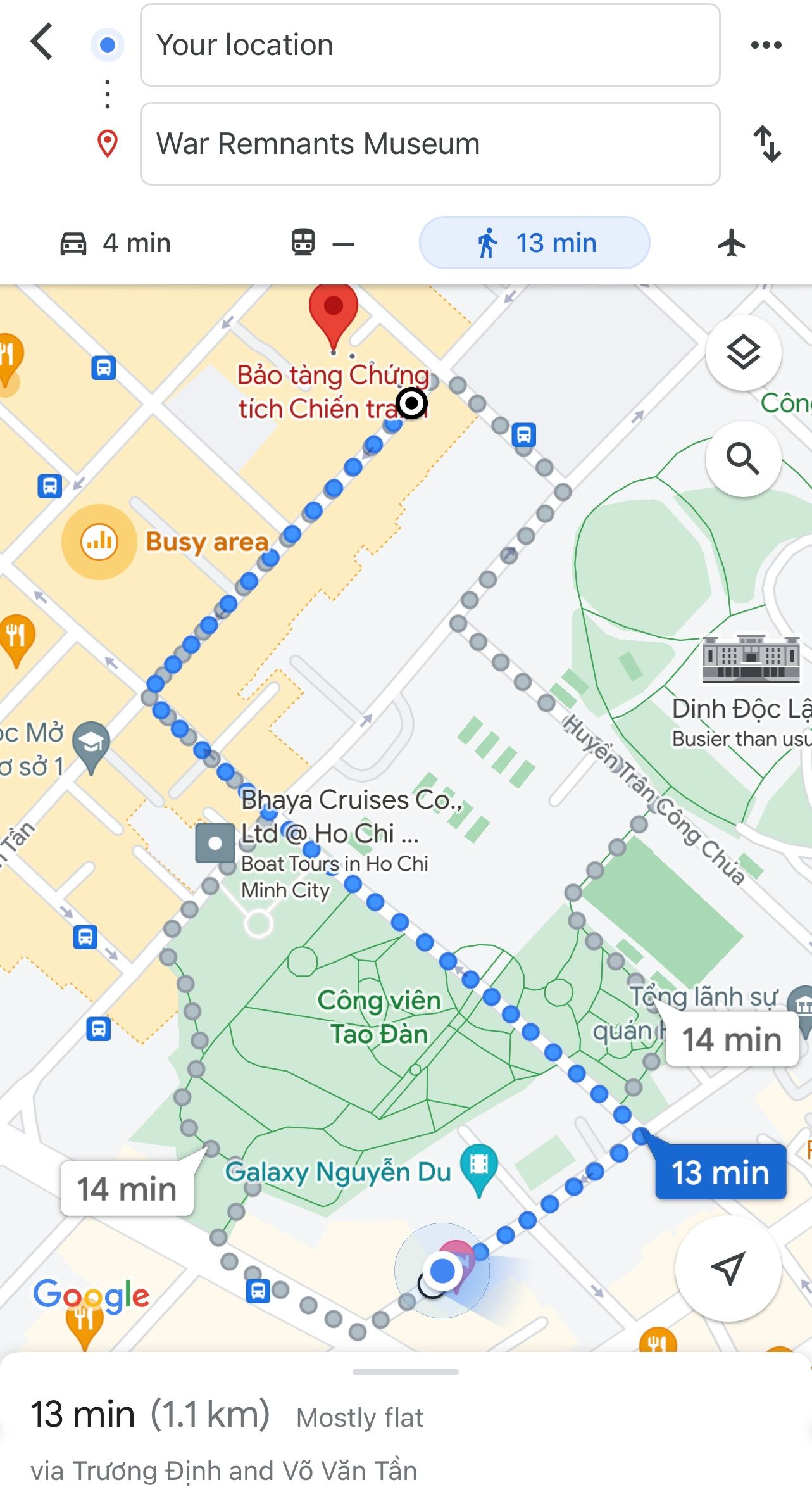
13 minute walk, not bad, off I went. I have to say that I really enjoy the walks through the city here in Ho Chi Minh. Its a very busy city but they have also made sure to include some very nice parks. One of them being the Công viên Tao Dàn park.





While walking through this small park it feels easy to forget that you are in the largest city in Vietnam. With only a subtle reminder from the horns a short distance away just ouside the park. Once you make it through the park you are again greeted by the locals cooking street food and the random guys stopping to ask where you are from and if they can getvyoh a ride to your destination. (for some insanly high price)
When you finally arrive to the war museum you will see a 4 story building with a collecton of old U.S. military equipment and vehicles in a courtyard out front of the building. You know you are in the right spot when the road around the building is full of sightseeing busses and taxi's.




Just like any other museum there is an entry fee. To get in you better be prepared to spend 40,000 dong! After the sticker shock you can check your wallet and see that is only $1.71.
Once you get past the gate you can get right up next to all of the static displays. Each one has their own data board which gives general stats about the equipment one display. An example would be how much a tank weighs and how big and type of rounds that is shoots.






Towards the left side of the courtyard you will see your first exhibit which is the imprisonment system during the Vietnam wars. (both the french invasion as well as the american war)

This is when you learn that you are going to be in for a lot of reading during your time in the museum.

Thankfully all of this is split the top half is in vietnamese and the bottom half is in english. You are still going to be in for hours of walking and reading.
Also this would probably be a good time to mention that most of the doors here are open and the A/C is turned off. Just to give you an idea of the weather in HCMC Vietnam, right now it is 90f with a humitiy level of 66% and the feels like temperature is 105f. Basically that means bring water and a towel becasue you will be sweating while you read.

As you make your way through the exibit which explains many of the terrible living conditions for prisioners and the many ways they were tortured you will begin to get the idea that this is not going to be a museum that leaves you with any feel good feelings. One of the stories that stuck out to me was one explaining how a man had all of his finger nails and toe nails removed. The exibit made sure to include photos to go along with the description. Another was how they would stretch a man out by tying his hand and feet and pulling him long ways. Then after the pain in all of his joints from being stretched they would use his body as a type of rubberband and smack him on the ground splating him usually resulting in killing him from blood loss. Again the exibit made sure to inclue photos.
After that exibit you get to the next one called. Tiger Cages, Special Cells in Con Dao Jail.

This exhibit continues to explain the harsh conditions that prisioners were put through. I dont feel like anyone belives that war time prisioners are treated fairly but it feels exceptionally egregious knowing that these people were tourtured just because they fought for what they believed in.
This exhibit goes on to show that people in this prision were subjected to solitary confinement, tiger cages, also open air cells.
Solitary confinement is probably self-explanatory, but this is when a prisioner is subjected to being isolated and deprived of any social interations.

Tiger cages are a barbed wire box made to cage prisioners where they would be left out to lay on the hot sand in the sun. Often times naked and unprotected from the elements while getting cut from the barbed wire.
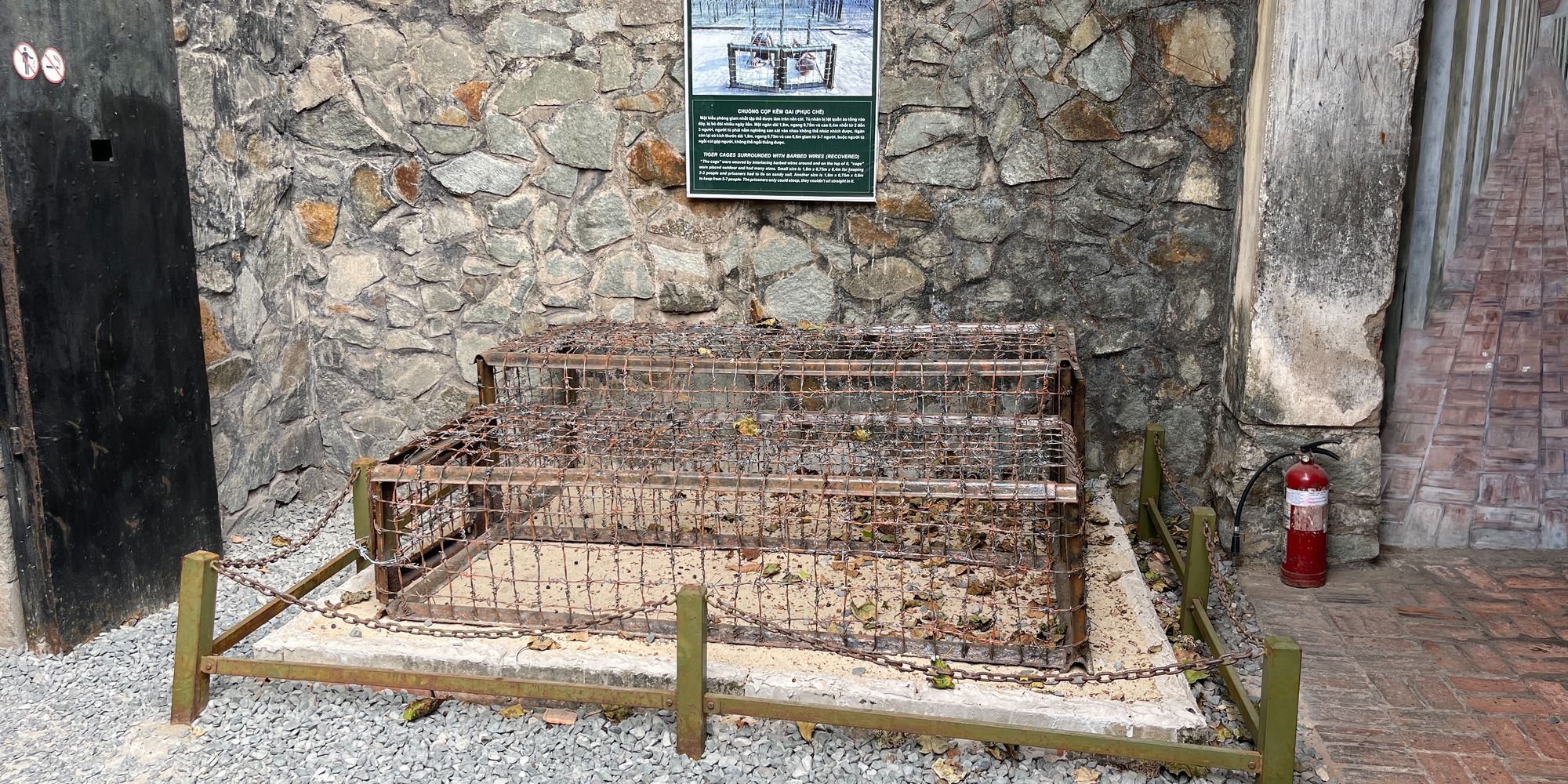
The open air cells were just what they sound like. These cells were roofless cells that contained just bare walls and barbedwire at the top. Again the prisoners were usually put in these cells naked and forced to tolerate the weather no matter the condition. Water and food would be limited and the prison treated is as a reward for the prisoner so these prisoners were considered "fair game" for the guards entertainment. (sorry guys I thought I had a picture of this cell but it looks like I dropped the ball and missed this one.)
After these two outdoor exhibits the next are on the ouside corners of the building and inside. There is still not much A/C usually just small rooms within the building and but the majority of the building is open to the outside. The 2 corner exibits are exhibits showing the size of the bombs used during the wars most of which were dropped by the U.S.
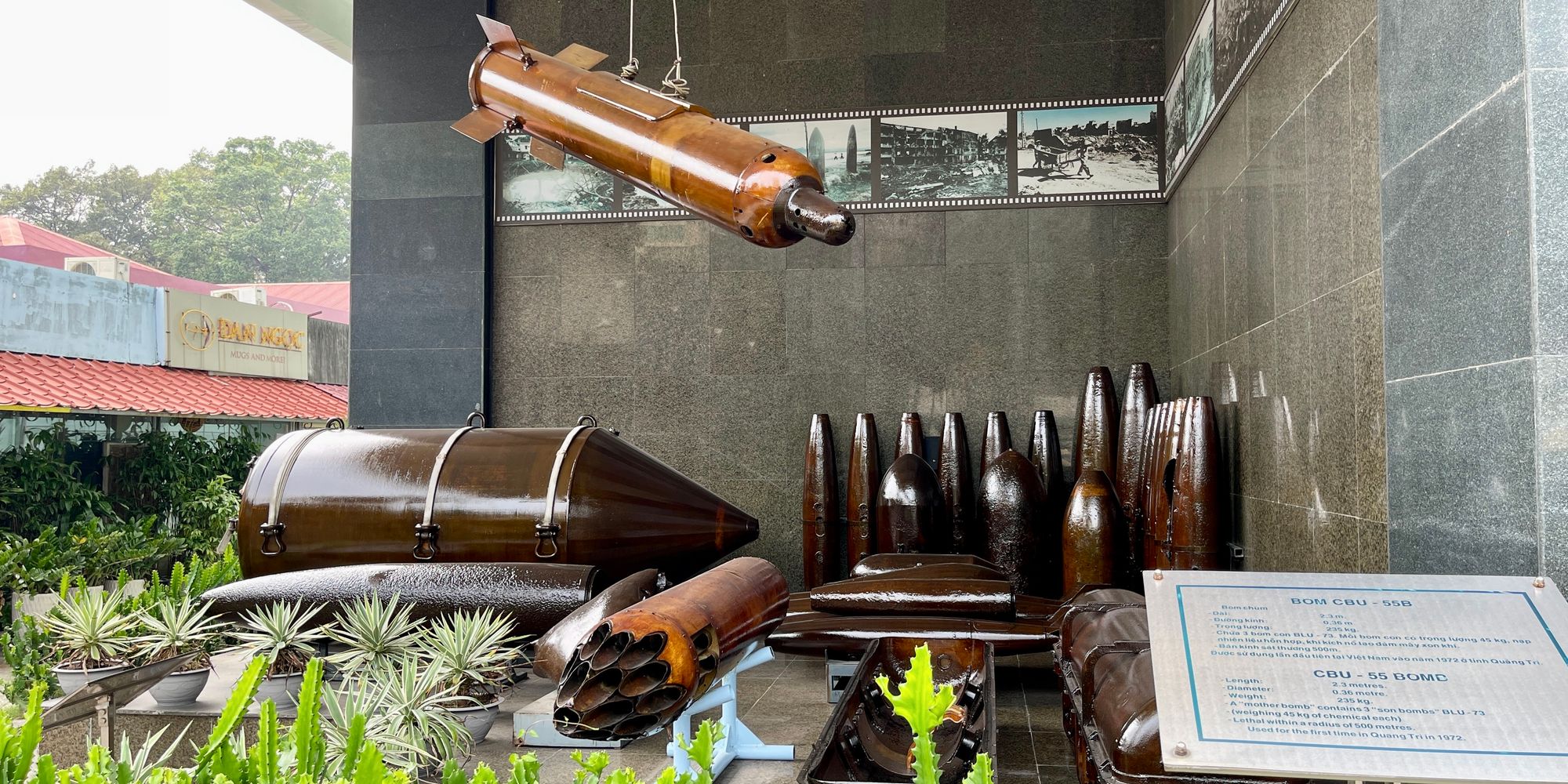




Heading inside you will see 2 gift shops and the start of the indoor exibits. The first one you will see will be an exibit showing the life of an average Vietnamese citizen during the bombings of the American war. Once inside I began taking much fewer pictures since the majority of these exibits are pictures with descriptions. I am sure you can find these exhibits online if you would like I am moslty going to just tell you about them.

The exhibit showing the life of the Vietnamese people goes on to explain how through american bombing the Vietnamese people moved almost all of their production and manufacturing out of the cities leaving mostly empty cities to be bombed. The exhibit also explains about how life became normal when the air raid siren would go off everyone would run to a bunker and as soon as the bombing was over they would leave the bunkers to go back to work.
The next exhibit was to show all of the protests around the world expressing peoples distaste for americas involvement in the war. There were lots of pictures of individual people who were prominate voices at the time speaking out against the war. Each wall split up buy country to show a global push by citizens from every country to stop the war in Vietnam.

After that you will head upstairs where directly to your left is a door to the exhibit called War Crimes. This exhibit was particularly gruesome showing lots of images from the war of dead people and the many ways that they were killed. As well as the war crimes commited by the americans. There were of pictures showing entire villages of people which had been killed and left in the street. Two images that really stood out to me were one of an american solder carrying the remains of a Vietnamese soldier that had been hit by a gernade launcher. The other image was of a vietnamese person being pushed out of a helicopter mid flight while his hands and feet are tied together for him to fall to his death.



Now that you will be feeling good and sad about the way people were treated during the war. You get to move onto the next exhibit called "Agent Orange." As you walk in you see a small box on the ground close to the door. It is half full of what looks like water. Reading the placard it describes 2 babies that were born with birth defects due to agent orange. Well then the curiosity sets in to see the babies so you have to squat down to see into the glass from below the water line and sure enough there were 2 babies in the liquid showing the effects of agent orange. One baby was a pair of conjoined twins the other was very disfigured.


The rest of the exhibit goes on the show the immediate as well as lasting effects of agent orange. From chemical burns to birth defects.


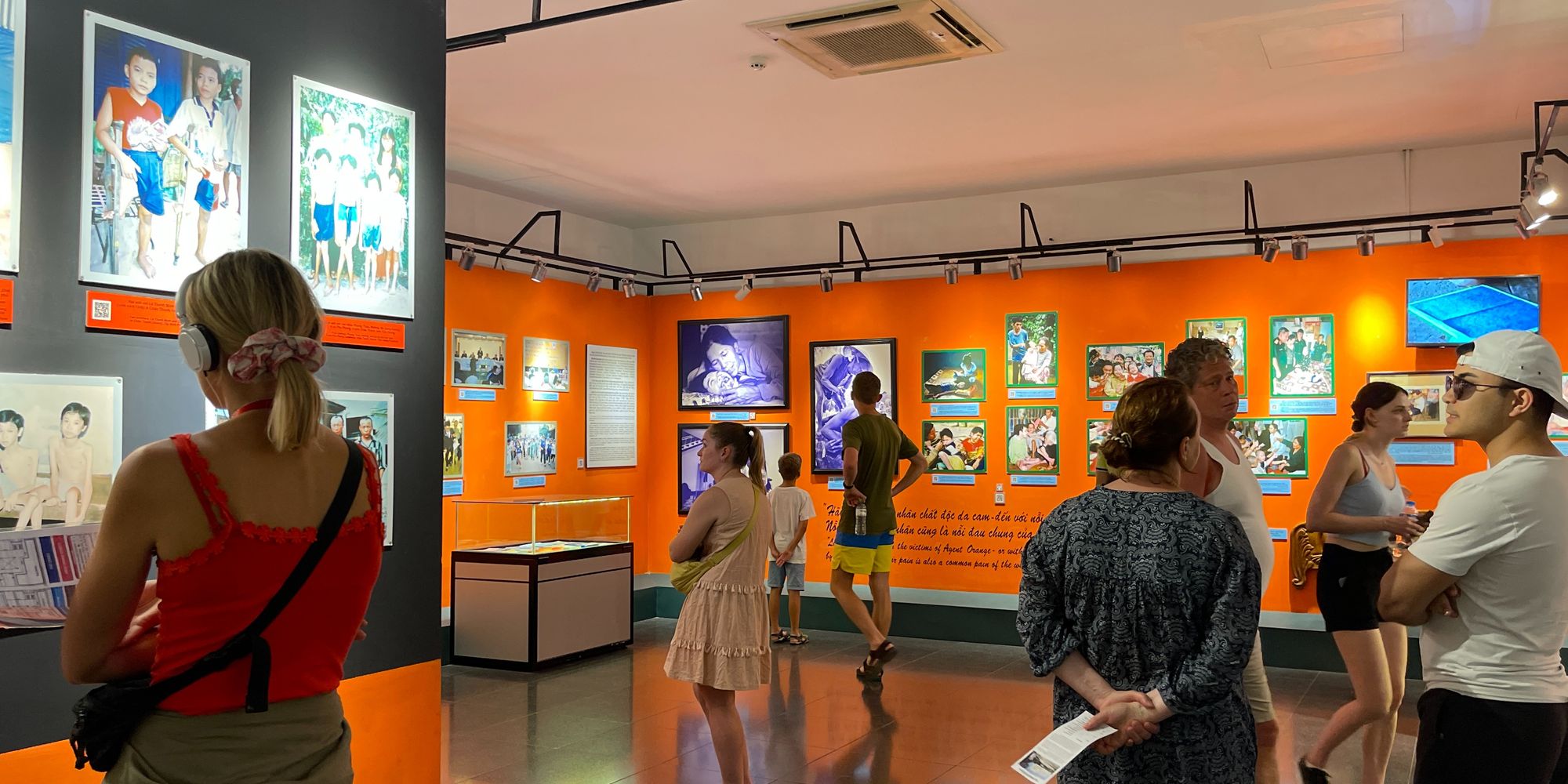
Leaving the agent orange exhibit after going through the prision and war crimes exhibit you are really feeling down about this whole museum. While also understanding that this is the history that this country has gone through. So pushing on you make your way up another flight of stairs. To the third and final floor. This floor starts off with an exhibit called Requiem. Which is a nive change of pace from the all of the morbidly sad killings and agent orange effects. Requiem is part of an effort to show the efforts put in to help rebuild Vietnam after the war. This is mostly a collection of pictures taken showing the rebuilding process as well as pictures of vietnamese citizens happy yo just get back to their normal life.

Once you leave this exhibit the last and final exhibit is called "Historical truths."

The best way to describe this one is basically this exhibit is Vietnam's side of the story. It begins by explaining how France attempted a second colonization of vietnam which the people of Vietnam were against and through guerrilla style resistance and the harsh terrain in Vietnam was greatly slowed down. As the French were failing to succeed America decided to support by providing money, vehicles and Aid packages to the french. Even though America claimed to not be involved in the war there was evidence to show americans involved in the conflict before the official start of americas involvement.
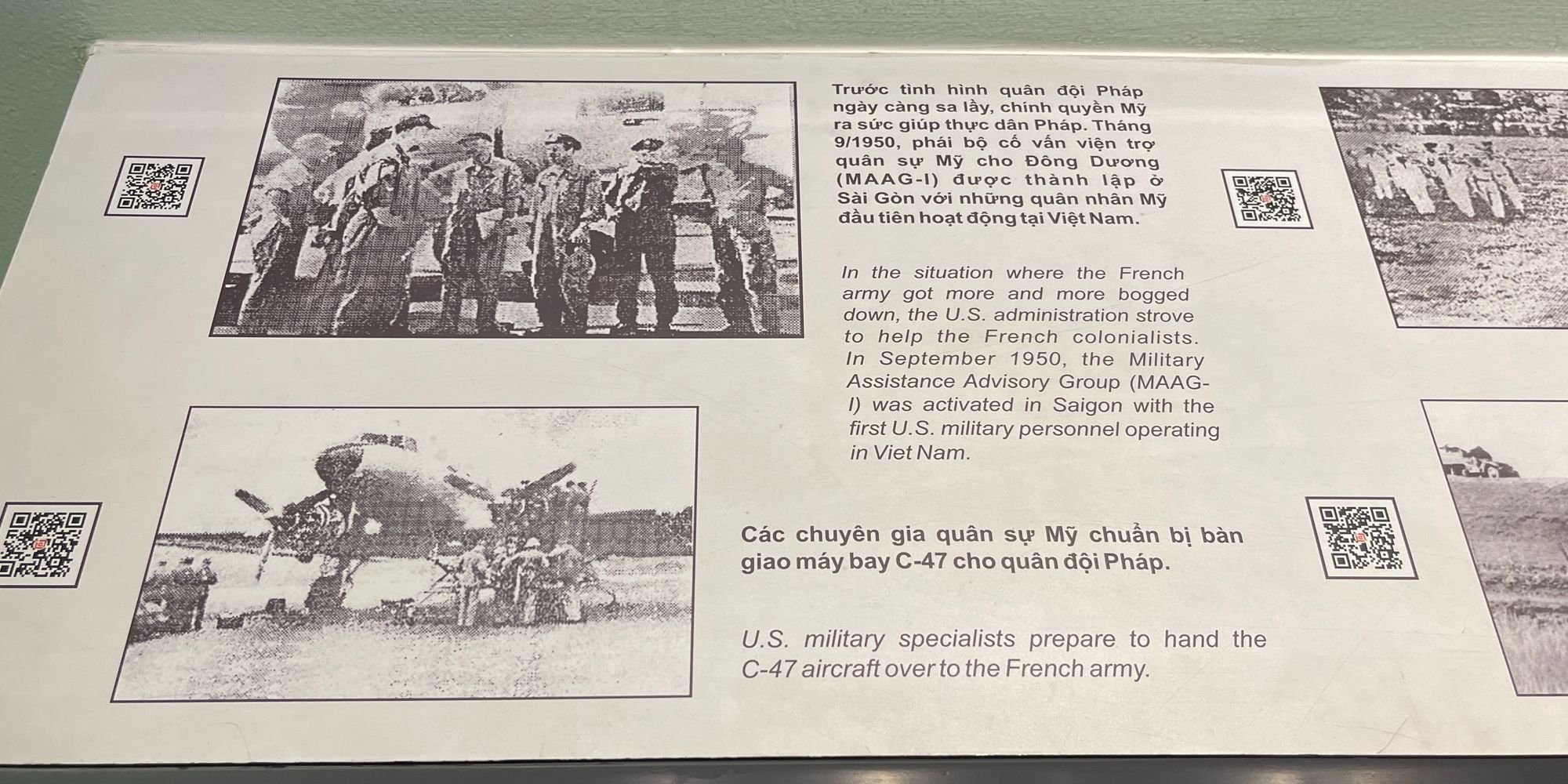




Shortly after the aid packages took place is the point of which america used the lie about the gulf of Tonkin to get directly involved with the war.
After completing the museum youll have a nice walk down the stairs while you contemplate all of the things you saw and read. If you find yourself in Ho Chi Minh City I would highly recommend going to this museum. Just make sure to bring some water and be ready to read a lot.
Member discussion